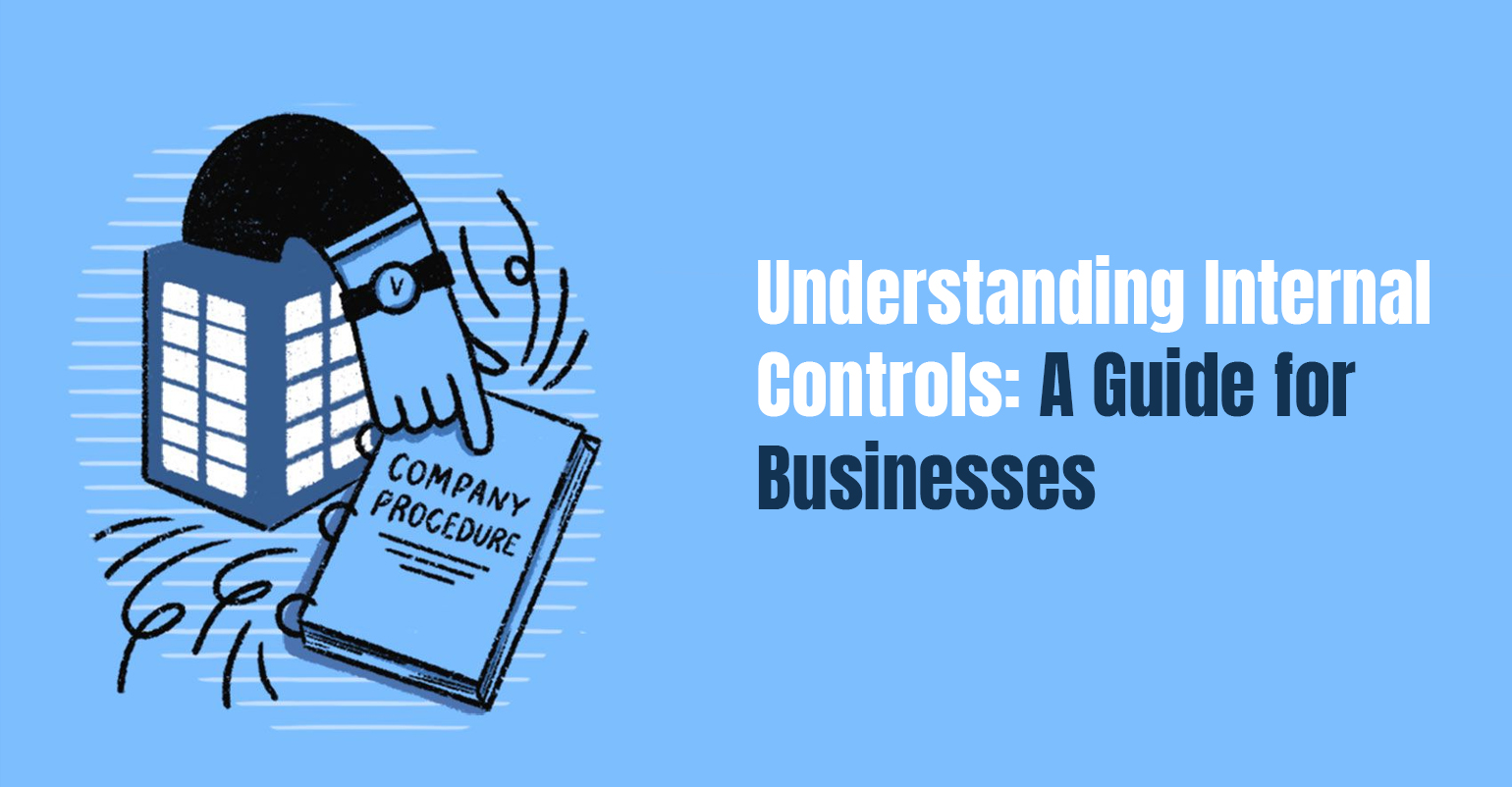In today’s rapidly changing business environment, ensuring robust financial health and operational efficiency is paramount. Internal controls are essential processes that help organizations achieve these objectives. They are designed to safeguard assets, enhance the accuracy o f financial reporting, and promote compliance with applicable laws and regulations. This guide aims to provide businesses with a clear understanding o f internal controls, their types, benefits, and best practices for implementation.
What are Internal Controls?
Internal controls refer to the policies and procedures established b y a company to ensure the integrity of financial and accounting information, promote accountability, and prevent fraud. These controls can b e categorized into three primary types:- ● Preventive Controls: These are proactive measures designed to deter errors or fraud before they occur. Examples include authorization processes and mandatory employee training.
- ● Detective Controls: These controls identify and alert organizations to any errors or irregularities that have occurred. Examples include reconciliations, audits, and variance analyses.
- ● Corrective Controls: These are implemented to correct any issues that are discovered. For instance, if a discrepancy is found during an audit, corrective actions could involve revising policies or retraining staff.
Benefits of Internal Controls
Implementing internal controls offers numerous benefits to organizations, including:- ● Improved Financial Reporting Accuracy: Reliable internal controls enhance the quality of financial data, leading to more accurate reporting and decision-making.
- ● Enhanced Operational Efficiency: Streamlined processes minimize waste and reduce operational costs, ultimately boosting productivity.
- ● Better Risk Management: Identifying and addressing potential risks allows organizations to mitigate threats before they escalate.
- ● Compliance with Laws and Regulations: Internal controls help ensure adherence to legal standards and regulations, reducing the likelihood of penalties or legal actions.
- ● Reduced Fraud and Errors: With effective internal controls in place, organizations can minimize the risk of fraudulent activities and unintentional errors.
Components of Internal Control
The Committee of Sponsoring Organizations of the Treadway Commission (COSO) framework outlines several components crucial to establishing a solid internal control system:-
● Control Environment: This sets the tone for the organization and includes factors such as:
- ○ Integrity and Ethical Values: A strong ethical foundation promotes accountability and transparency.
- ○ Board of Directors Oversight: Active involvement by the board ensures that management is held accountable.
- ○ Management's Philosophy and Operating Style: The approach of leadership toward risk and control directly influences the organizational culture.
- ● Risk Assessment: Organizations must identify and analyze risks to their objectives and assess the likelihood and potential impact of these risks.
- ● Control Activities: These are the specific actions that mitigate risks, including:
- ○ Authorization and Approval: Ensuring that all significant transactions are approved by a designated individual.
- ○ Segregation of Duties: Dividing responsibilities among different people to reduce the risk of error or fraud.
- ○ Physical and Access Controls: Implementing measures such as locks and security systems to protect assets.
- ● Information and Communication: This involves the timely flow of information related to internal controls throughout the organization and to external stakeholders.
- ● Monitoring Activities: Organizations should regularly monitor their internal controls and evaluate their effectiveness through ongoing assessments and independent evaluations.
Types of Internal Controls
Internal controls can be categorized based on their nature and function:- ● Administrative Controls: These include policies and procedures that guide daily operations, ensuring that tasks are performed consistently.
- ● Technical Controls: These are systems put in place to protect data and information, such as access controls, encryption, and data loss prevention measures.
- ● Physical Controls: These measures safeguard physical assets, including security cameras, alarms, and secure storage for sensitive materials.
- ● IT Controls: These are focused on the technology infrastructure and include firewalls, intrusion detection systems, and regular software updates to protect against cyber threats.
Implementing Internal Controls
To successfully implement internal controls, organizations should take the following steps:- 1. Identifying Control Gaps and Weaknesses: Conduct a thorough assessment of existing controls to identify vulnerabilities and areas needing improvement.
- 2. Designing and Implementing New Controls: Based on the assessment, develop and implement controls tailored to address specific risks.
- 3. Training Employees on Internal Controls: Employees should be educated about the importance of internal controls and their role in maintaining them.
- 4. Monitoring and Evaluating Control Effectiveness: Regular evaluations of the control processes help ensure their continued effectiveness and adaptability to changing circumstances.
Common Internal Control Challenges
Organizations often face challenges when implementing internal controls, including:- ● Insufficient Resources: Limited budgets and personnel can hinder the establishment and maintenance of effective controls.
- ● Lack of Management Support: Without leadership buy-in, it can be difficult to foster a culture that prioritizes internal controls.
- ● Inadequate Training: Employees may lack the knowledge needed to understand and implement internal controls effectively.
- ● Complexity of Control Implementation: The multifaceted nature of internal controls can lead to confusion and resistance among staff.
Best Practices for Internal Controls
To overcome challenges and ensure successful implementation, organizations should adhere to the following best practices:- ● Regular Risk Assessments: Conducting frequent risk assessments helps identify potential threats and ensure that controls are appropriately aligned.
- ● Continuous Monitoring: Ongoing monitoring of internal controls allows organizations to quickly identify and address issues as they arise.
- ● Internal Audit Function: An independent internal audit function can provide an objective evaluation of control effectiveness and compliance.
- ● Compliance with Regulations: Stay informed about relevant laws and regulations to ensure that internal controls remain compliant.
- ● Employee Training and Awareness: Regular training sessions can enhance employee understanding of their responsibilities regarding internal controls.

